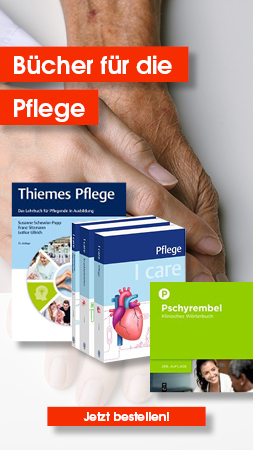E-Book, Englisch, 176 Seiten, ePub
Herdman / Kamitsuru / Lopes Supplement to NANDA International Nursing Diagnoses: Definitions and Classification 2021-2023 (12th edition)
1. Auflage 2023
ISBN: 978-1-68420-586-8
Verlag: Thieme Medical Publishers
Format: EPUB
Kopierschutz: 6 - ePub Watermark
E-Book, Englisch, 176 Seiten, ePub
ISBN: 978-1-68420-586-8
Verlag: Thieme Medical Publishers
Format: EPUB
Kopierschutz: 6 - ePub Watermark
NANDA-I supplement provides in-depth insights on current and upcoming nursing diagnoses
This supplement to the is a succinct, companion to the comprehensive textbook by T. Heather Herdman, Shigemi Kamitsuru, and Camila Lopes. The 12th edition is the definitive guide on nursing diagnoses, as reviewed and approved by NANDA International (NANDA-I), the leading professional organization that develops, researches, disseminates, and refines nursing taxonomy.
This book is designed to give current users of the full text a “quick glance” into what is new in the latest edition and more in-depth information on key changes. Six introductory chapters provide insightful commentary on changes, including new nursing diagnoses, revisions to nursing diagnosis labels and diagnoses, and retired nursing diagnoses. The supplement also covers three types of clinical reasoning models—problem-focused nursing diagnosis, risk nursing diagnosis, and health promotion nursing diagnosis—which are enhanced by visual flow charts to give readers a better understanding of the essential steps required to make accurate diagnoses.
KeyFeatures
- Structured documentation for each of the 46 new diagnoses introduced to the 12th edition, including presentation of a model case, model case assessment, and a tabular overview of the diagnostic parameters, ultimate goal, outcome, and nursing actions related to the model case
- Explanation of standardized terminology changes used in nursing diagnostic indicators, including defining characteristics, related factors, and risk factors
- Discussion of conceptual issues the authors anticipate will require additional clarification in the upcoming 13th edition, including recommendations for modification
This must-have supplement enhances understanding, supports education, and facilitates implementation of important diagnostic changes in daily practice. All practitioners, including nursing students, professional nurses, nurse educators, nurse informaticists, and nurse administrators, who utilize the primary text will benefit from reading this companion book.
This book includes complimentary access to a digital copy on https://medone.thieme.com.
Publisher's Note: Products purchased from Third Party sellers are not guaranteed by the publisher for quality, authenticity, or access to any online entitlements included with the product.
Autoren/Hrsg.
Fachgebiete
Weitere Infos & Material
Part 1 NANDA-I Definitions and Classification: What is new in the 12 edition?
1 What is new?
2 Issues and upcoming activities
3 Clinical reasoning models
Part 2 Basic understanding of 46 New Nursing Diagnoses
Class 2. Health management
Class 1. Ingestion
Class 4. Metabolism
Class 1. Urinary function
Class 2. Gastrointestinal function
Class 2. Activity/exercise
Class 4. Cardiovascular/pulmonary responses
Class 4. Cognition
Class 2. Family relationships
Class 2. Coping responses
Class 2. Physical injury
Class 3. Violence
Class 6. Thermoregulation
Class 2. Development
1 What is new?
1.1 Introduction
As in the previous version, in this chapter you will find the addition of new nursing diagnoses, revisions to existing diagnoses, and retirement of diagnoses from the classification due to an unsatisfactory level of evidence. All of these modifications are introduced in the NANDA-I nursing diagnoses: definitions and classification, 2021–2023 textbook. However, the purpose of this companion book is to provide more in-depth information to assist your understanding, to support education, and to facilitate implementation of these changes in practice.
1.2 46 New Nursing Diagnoses
NANDA International Nursing Diagnoses: Definitions & Classification, 2021–2023, pp. 24–29 There were 46 new nursing diagnoses in this edition. Each of these diagnoses will be discussed in ? Part 2, in which we provide a case study for each diagnosis, along with some examples of outcomes and interventions, which are not intended to be a complete list or a definitive plan of care, but rather an example to enhance learning and comprehension.
Table 1.1 New nursing diagnoses by domain| Domain | Nursing diagnosis label | Code |
| 1. Health Promotion | Risk for elopement attempt | 00290 |
| Readiness for enhanced exercise engagement | 00307 |
| Ineffective health maintenance behaviors* | 00292 |
| Ineffective health self-management* | 00276 |
| Readiness for enhanced health self-management* | 00293 |
| Ineffective family health self-management* | 00294 |
| Ineffective home maintenance behaviors* | 00300 |
| Risk for ineffective home maintenance behaviors | 00308 |
| Readiness for enhanced home maintenance behaviors | 00309 |
| 2. Nutrition | Ineffective infant suck-swallow response* | 00295 |
| Risk for metabolic syndrome* | 00296 |
| 3. Elimination and Exchange | Disability-associated urinary incontinence* | 00297 |
| Mixed urinary incontinence | 00310 |
| Risk for urinary retention | 00322 |
| Impaired bowel continence* | 00319 |
| 4. Activity / rest | Decreased activity tolerance* | 00298 |
| Risk for decreased activity tolerance* | 00299 |
| Risk for impaired cardiovascular function | 00311 |
| Ineffective lymphedema self-management | 00278 |
| Risk for ineffective lymphedema self-management | 00281 |
| Risk for thrombosis | 00291 |
| Dysfunctional adult ventilatory weaning response | 00318 |
| 5. Perception / cognition | Disturbed thought process | 00279 |
| 7. Role relationship | Disturbed family identity syndrome | 00283 |
| Risk for disturbed family identity syndrome | 00284 |
| 9. Coping / stress tolerance | Maladaptive grieving* | 00301 |
| Risk for maladaptive grieving* | 00302 |
| Readiness for enhanced grieving | 00285 |
| 11. Safety / protection | Ineffective dry eye self-management | 00277 |
| Risk for adult falls* | 00303 |
| Risk for child falls | 00306 |
| Nipple-areolar complex injury | 00320 |
| Risk for nipple-areolar complex injury | 00321 |
| Adult pressure injury | 00312 |
| Risk for adult pressure injury* | 00304 |
| Child pressure injury | 00313 |
| Risk for child pressure injury | 00286 |
| ... |






